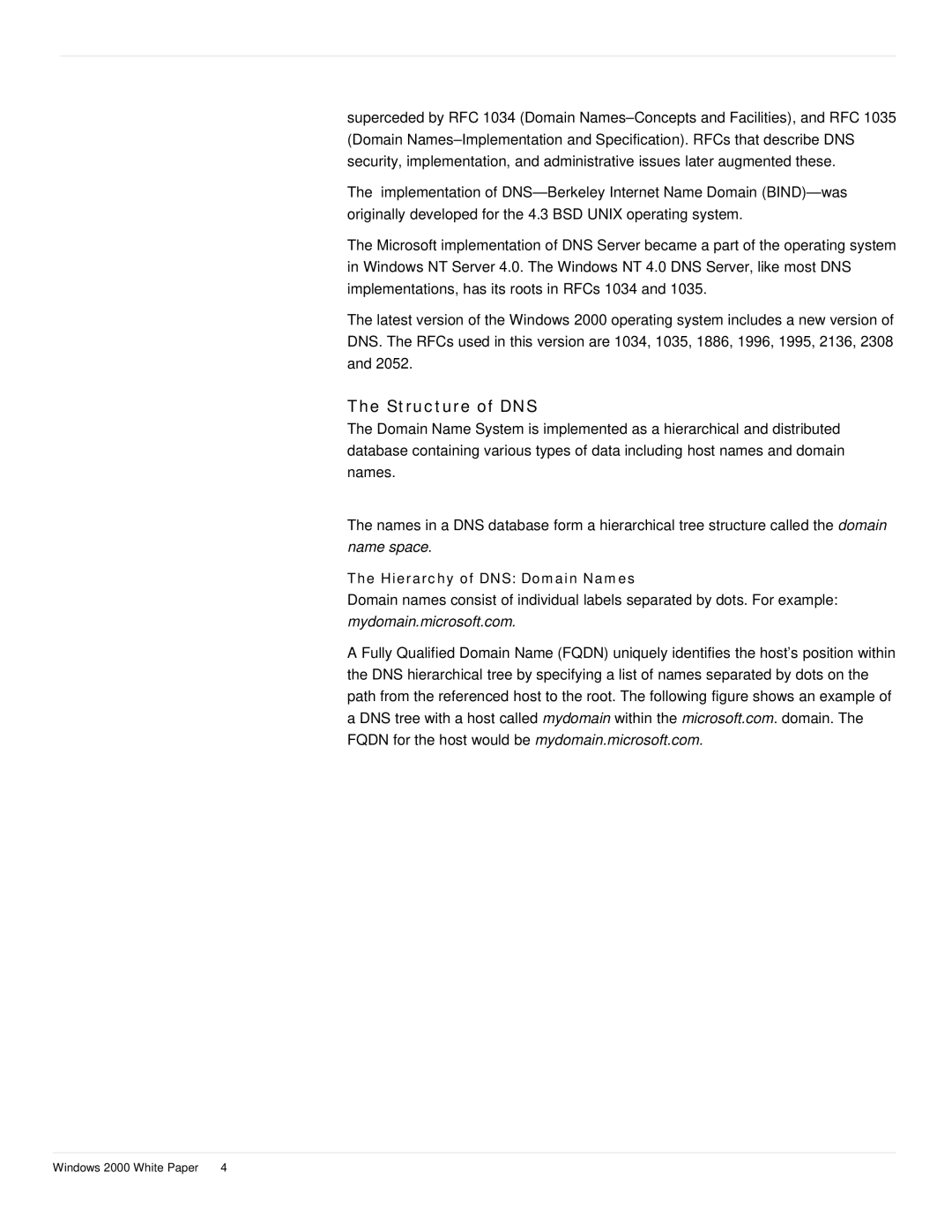
superceded by RFC 1034 (Domain
The implementation of
The Microsoft implementation of DNS Server became a part of the operating system in Windows NT Server 4.0. The Windows NT 4.0 DNS Server, like most DNS implementations, has its roots in RFCs 1034 and 1035.
The latest version of the Windows 2000 operating system includes a new version of DNS. The RFCs used in this version are 1034, 1035, 1886, 1996, 1995, 2136, 2308 and 2052.
The Structure of DNS
The Domain Name System is implemented as a hierarchical and distributed database containing various types of data including host names and domain names.
The names in a DNS database form a hierarchical tree structure called the domain name space.
The Hierarchy of DNS: Domain Names
Domain names consist of individual labels separated by dots. For example: mydomain.microsoft.com.
A Fully Qualified Domain Name (FQDN) uniquely identifies the host’s position within the DNS hierarchical tree by specifying a list of names separated by dots on the path from the referenced host to the root. The following figure shows an example of a DNS tree with a host called mydomain within the microsoft.com. domain. The FQDN for the host would be mydomain.microsoft.com.
Windows 2000 White Paper | 4 |
